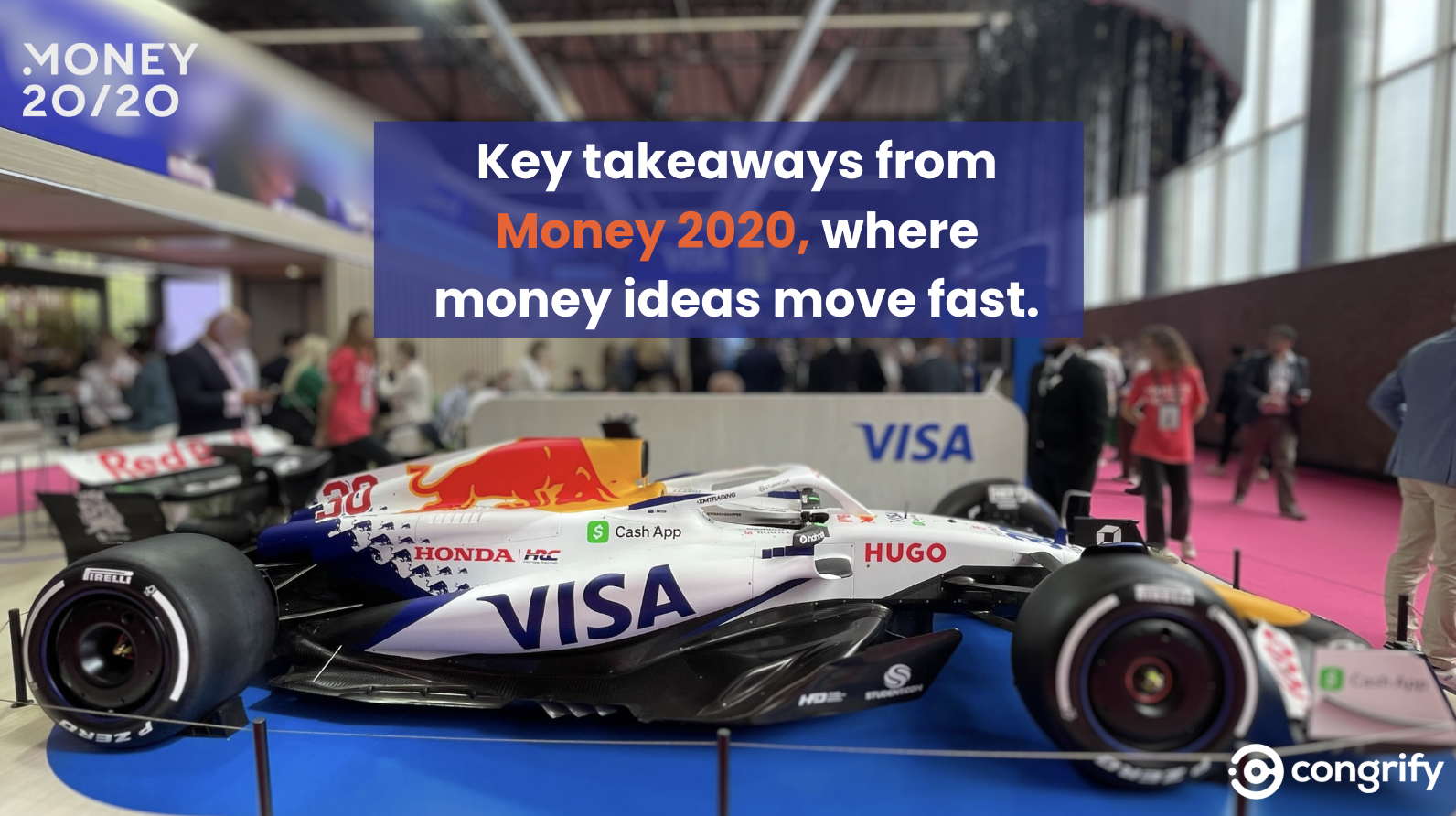Money 20/20 Amsterdam 2025: Fintech Vibes, Stablecoins, and AI Buzz

Key takeaways from Money 2020 in Amsterdam, 2025 edition.
By Marco Conte (June 6, 2025)
General Impressions
Money 20/20 in Amsterdam is a classic for European fintech experts and businesses. The vibe and the crowd felt as usual, delighted by the sunny Monday and Tuesday days in Amsterdam, which might not be extremely usual. Executives and partner teams for the most relevant payment service providers in Europe are always present (we haven’t seen many coming from overseas this year). We have been at different editions, both in Amsterdam and in Vegas, and the crowd felt similar to the one in previous years. The venue was organized as always, with some nice spots (great to have some calls near the lake at the Beach Club), and a great food selection. A note for improvements to the organizers, no matcha latte, not really in Amsterdam’s hipster spirit!
The Networking Frenzy
The list of side events was impressive as always, on our list we tracked almost 15 different events outside of the venue, organized either by payment service providers or VCs. It’s always hard to choose the right events to be at, considering the available time, but we feel satisfied as we managed to attend 7 side events in total.
On Monday, kudos to the FAN network and PCN for organizing a great pre-Money2020 event, many familiar faces there, new connections, and true first-hand experiences from payments industry experts working for and with merchants.
This year, we focused on being more present at payment service provider events, chatting with industry peers, payment experts, and general industry operators. It’s all about people; in some events, the quality can simply be higher due to the expertise that certain industry experts can bring, and great experts bring other great experts. The event organized by Stripe and Klarna was surely on top of our list.

Hot Topics & Key Themes We Noticed
a. Stablecoins
- What’s the sentiment around stablecoin payouts (e.g. Worldpay)? Are they seen as real infrastructure or still hype?
Stablecoins are in the mind of many people, as seen, for example, in Worldpay’s announcement last week. In some discussions, the topic was present on stage. One sentence that got stuck in our mind is “every company will need a stablecoin strategy”, a few years ago at the same event, the sentence was “every company will become a fintech one day”. The prophecy seems to be happening.
b. EU Payment Strategy
- Where are we with Wero, Open Banking, or any new EU strategy? Did you sense momentum or frustration?
Europe has tried to find its own way and payment champion, but we don’t seem to be there yet. Open banking was the chosen one, but the adoption is not yet where it is expected to be. Even if there is a bit of movement, we still look at it as isolated to some specific industry use cases. We also know that adoption in the payments industry can be slower than expected in some cases.
Wero wants to be the go-to wallet for Europe, but we are very concerned about the implementation timelines and the risk of losing the opportunity due to missing momentum. As an example, until the end of 2026, the availability will be limited to the Netherlands, Belgium, Luxembourg, Germany, and France (starting only at the end of the year), including a planned migration and rebranding of Ideal. Looking at the global landscape, and the need to shake up the European payments infrastructure and independence from the global card schemes, this seems to be a bit too slow to disrupt the European landscape.
c. AI x Fintech
- How seriously is the industry treating AI-native fintech use cases (like OpenAI + Stripe)? Any concrete ideas shared?
AI is everywhere in the world right now; there is no tech conference where this is not at the top of the list of discussed topics. At Money20/20, AI is in the air, but we are at a pure fintech event, and the “traditional” AI use case applications have been here forever, considering the need to fight fraud and offering secure payments and identification processes.
Nevertheless, the event there had a dedicated AI stage agenda, which is surely appreciated as there is not a single company in the industry looking at optimizing business processes with AI, maybe some pushing it too much, see Klarna now promising a “Human VIP service” for some of his customers.
d. Embedded & Verticalized Payments
- Are companies going more niche and embedded? Did this come up in panels or chats?
Payments verticalization and embedded payments continue to take the scene in the payments industry as well, and the number of providers that can offer embedded or white-label solutions increases every year. Even if this is not the sexiest topic on the list, companies have looked at embedding nontraditional lines of business into their offering for years already, and this seems to be still the case for some businesses.
Traditionally verticalized companies can definitely benefit from integrating payment services in their offering, considering their customer base. That’s why we have seen over the last year some push from payment service providers offering their “PSP for platform” solutions, to seamlessly manage payments for platforms that directly manage relationships with other businesses.
What’s in it for Congrify
For us, it’s always great to catch up with industry peers, companies in the data space, and potential new partners or customers.
Data is always a topic of attention for many companies, and the demand for intelligence is higher than ever in the payments industry, considering the expected optimizations that companies are expecting from AI. Without good data, it can be almost impossible to gain true and real benefits. This is the value we are adding by ensuring that the data is in the best possible quality when ingested from multiple data sources, before having AI agents take action, see for example how our AI-Copilot works.
From all the topics we have touched, it stood out the fact that it is a common opinion that the payments industry has a cost transparency problem and merchants are looking not only at ways to reduce and optimize costs, but are looking at ways where they can truly audit the charges that are being passed through from payment service providers (i.e. if the correct interchange or scheme fees are being charged).
Where We’re Headed Next
We are attending a few events in Germany over the next few weeks. Drop us a message if you are there, and let’s chat about payments and data intelligence!
- Mastercard Fintech Forum in Berlin, 24th of June
- PayPal Beyond in Munich, 25th of June
- Stripe Session in Berlin, 1st of July
- Tech Quartier demo day in Frankfurt, 3rd of July